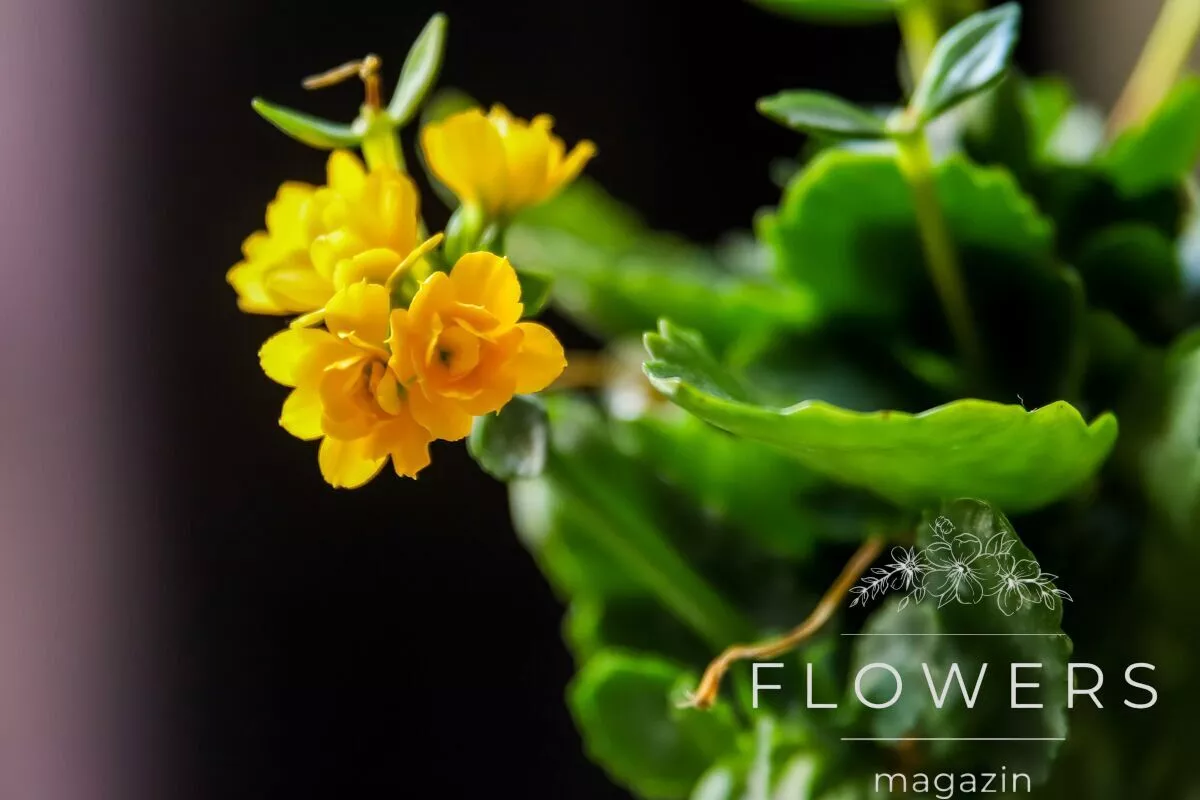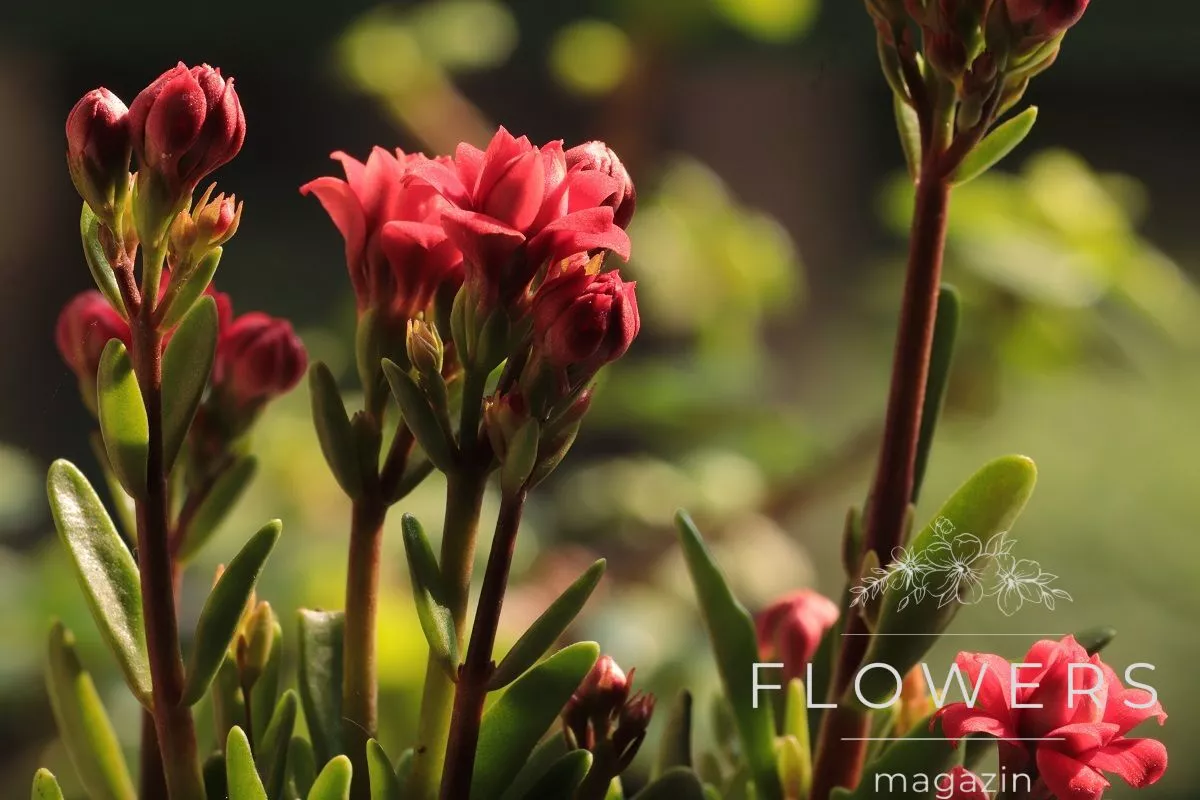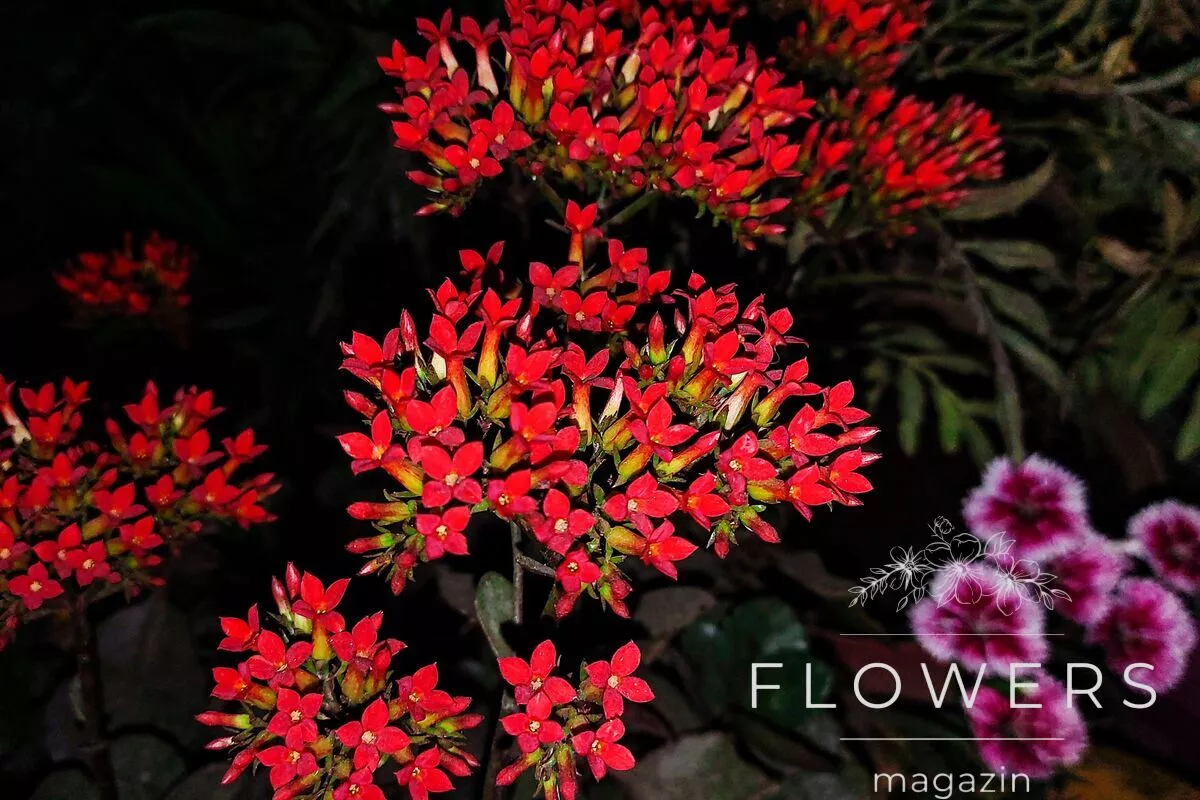What are the disadvantages of the Kalanchoe plant?
In this article, we will give some examples of the harmful effects of the kalanchoe plant
What is the cause of the red lip of the leaves?
The change in the color of the edges of the leaves of the Kalanchoe plant can have several causes, the most important of which are lack of light, sharp temperature changes in the storage environment, or cooling of the air.

Red and then yellowed leaves of the plant
If your plant starts to turn red and then even the new leaves turn yellow, the plant has likely been watered too much.
While it is true that a moist location is suitable for the plant under the specified care conditions, too much watering will cause the plant to die, so reduce watering The best way to know when to water is to touch the soil in the pot.
When the soil in the pot is relatively dry, water your kalanchoe. Try to water slowly so that the lower stem does not get wet
After watering, try to drain the water under the pot, and be sure to empty the water under the pot. If the humidity of the plant is too high, the roots will rot quickly and the leaves and flowers will dry up.
Rot on some Kalanchoe stems
If greens were used to enrich your pot, be sure to take them out. The rotting of the plant stem is because too much watering was done and the plant was too wet.
In the second step, reduce watering and water between watering. Make sure that the soil in the pot is dry and check that the drainage is not clogged.
Re-flowering of the plant
I suggest that when buying a plant, you need to choose a plant that has more buds, after moving the plant home and the flowering period of the plant is over, that is, if the flowers of the plant are dry, be sure to remove the dry flowers from the stem, this action causes the plant to lose energy Do not use dry flowers and be sure to strengthen Kalanchoe every two weeks with high potassium fertilizer such as Red Crystal.
Yellowing of old Kalanchoe leaves
If your kalanchoe has shed lower leaves and the younger leaves are small, I say for the first time in this article to be careful when watering, check drainage to make sure the pores are not closed, and at the same time be sure to drain the water from under the pot and apply any complete fertilizer every two weeks and check the light conditions of your plant.
Another possibility is that your plant is suffering from nitrogen deficiency (a lack of nutrients in the potting soil). Fortify the plant with fertilizers that contain more nitrogen.
Difficulties with sticking Kalanchoe cuttings
To obtain better cuttings, it is necessary to cut 5 to 7 cm long cuttings from the end of the stem with a sharp knife in the middle of the spring and place them in a place where the cuttings form for 2 to 3 days. The place where the cuttings are stored, should be protected from direct sunlight and have a temperature of 18-20 degrees.
After this time, the cuttings can be planted in a small pot (width about 9 cm), whose soil has the properties of compost for fleshy plants such as cacti, at a temperature of 20 to 21 degrees and reasonable light conditions (without coordinated daylight). Try to keep the soil of the pot moist and make sure that it is not too wet.
Note that when the plant begins to take root and grow, it needs more watering, but I emphasize again that excessive watering leads to the death of Kalanchoe.
The presence of green aphids on the leaves
If you discover aphids on the leaves of your plant, I recommend first using soapy water, then you can use household insecticide sprays, and finally diazinon poison.
Kalanchoe light conditions
As explained at the beginning of the article, Kalanchoe is a plant species that requires short periods of daylight. This means that the plant must be kept in complete darkness after sunset in the fall and winter when it is not in bloom.
Most of the time the plants need 12 hours of light, but then they should be kept in complete darkness. If you create the right environment for your plant, you will see new flowers growing again about 8 weeks after the old ones fall off. also for more information about Do Kalanchoes like a lot of water? click on the link
After flowering, put your plant in a bright place and don’t move it too much. Plenty of light means at least 13 hours of light per day.
If you don’t have enough natural light, you can use artificial light to meet this requirement. Just remember that the night must be dark.
Stretching of the Kalanchoe stems
The reason for the elongation of Kalanchoe leaves is a lack of light. Put the plant in a bright place, but not in direct light.
Kalanchoe – elongation of the Kalanchoe stem
The leaves are small
One of the problems faced by some friends is the smallness of the leaves and the addition of branches, this sign also indicates that the light of the plant is low, so move your plant to a bright and indirect environment. Use artificial.
Check the watering of your plant. Provide watering conditions and watering methods for the plant as mentioned in the previous sections.




